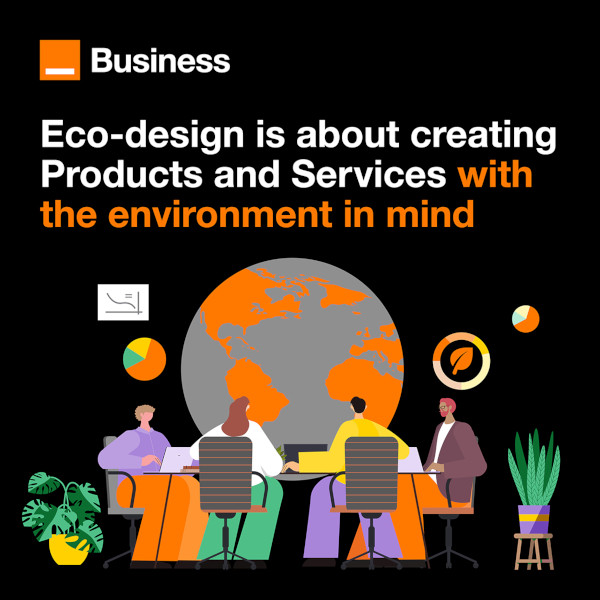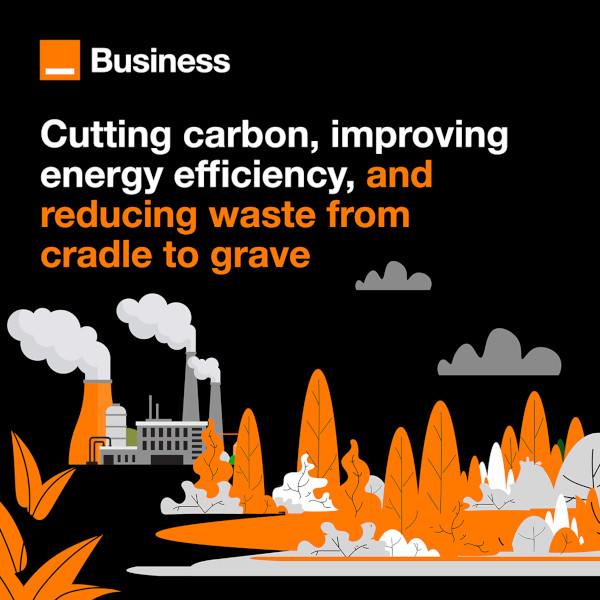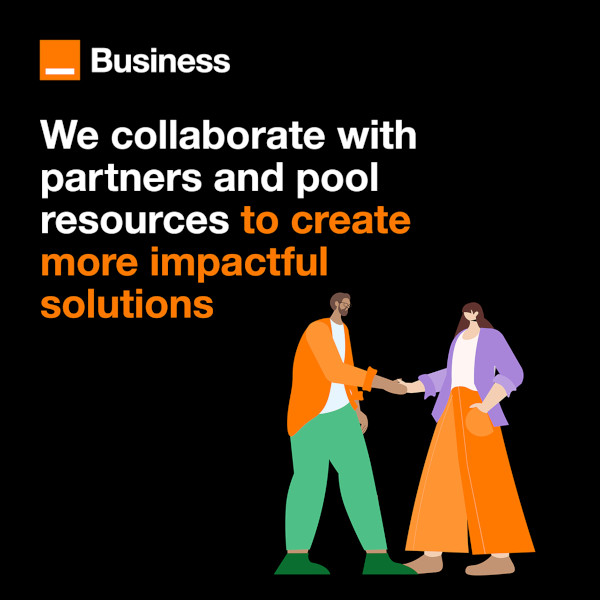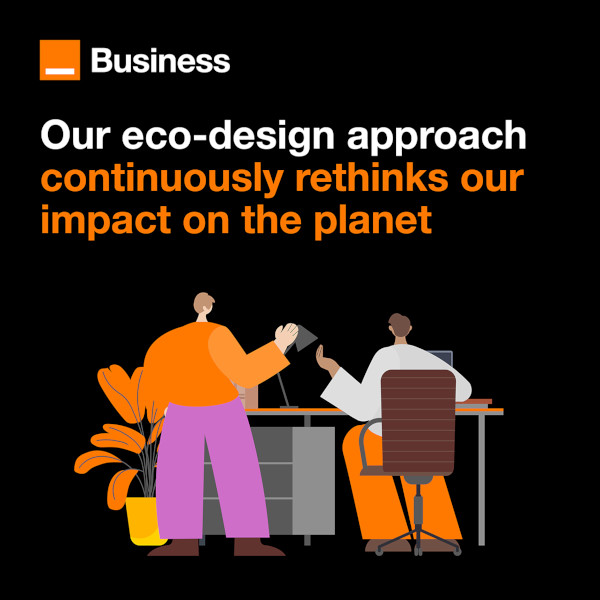Three key takeaways:
- Growing environmental challenges regulations, like ESPR and CSRD, are making sustainability a key business priority
- As part of our commitment to building a more responsible digital world, Orange Business is embedding an eco-design approach in our products and services. This aligns with our 2040 net-zero goal
- The eco-design approach Orange Business is deploying for our products and services , like Evolution Platform, and collaboration with partners, such as Cisco, are driving responsible sustainability practices
Eco-designing a product or service means considering its environmental impact from inception to end-of-life. The aim is to lower its negative impact on the environment, including carbon footprint, throughout the lifecycle, from the extraction of raw materials through to usage and retirement.

There is mounting regulatory pressure to make products more sustainable. The European Commission’s Eco-design for Sustainable Products Regulation (ESPR), introduced in 2024, has technology firmly in sight. It aims to improve circularity, energy performance, durability and recyclability. It is also designed to play a central role in developing a strong, single market for sustainable products in the EU. From a customer perspective, there are Scope 3 emissions to contend with in the Corporate Sustainability Reporting Directive (CSRD). These indirect emissions occur as part of an organization’s supply chain but are not controlled by them. This includes hardware, software, infrastructure and services.
As a result, Gartner notes that sustainability is simultaneously transforming IT sourcing and procurement. Environmental performance and transparency are now pivotal to both business strategy and reputation. IT leaders are expected to select, contract and manage vendors with credentials that align with their organizations’ sustainability plans.
At Orange Business, we invest heavily in creating more eco-efficient products and services. We aim to reduce our own and our customers' carbon footprints by offering technology and services that promote energy efficiency, reduce waste and decarbonize business operations.

Limiting environmental impact
We are actively working to realize this by adopting an eco-design methodology that continuously rethinks our impact on the planet. Our customers have come to expect products and services from Orange that minimize environmental impact. Our commitment also aligns with our goal of achieving net-zero carbon emissions by 2040.
Some of our products are being reworked to the eco-design approach to mitigate CO2 emissions. In contrast, others, such as Evolution Platform and Workplace Together Essentials, have been following the eco-designed approach from their inception. We aim to build all our new products and services around our eco-design methodology and rework our primary existing products when performing a significant refresh.

Our methodology follows four key steps:
First, we establish a team for the project, working jointly with product development, and train them in the broader benefits of eco-design. Next is the product strategy stage, where we run workshops on eco-design product development. We look at concrete actions that can be taken to mitigate CO2 emissions and a roadmap for the product's lifecycle. In the third phase, we implement this roadmap, set goals and create a baseline to measure environmental impacts. The final phase sees the completion of the eco-design product or service.
Later, measurements will be taken to chart the environmental gains that have been made. At first, we are focusing on the CO2 emission reduction; however the methods, based on LCA, will be able to tackle more environmental indicators like biodiversity, water consumption, raw material usage and primary energy usage.
Lifecycle assessment is crucial for sustainability
The core of our eco-design methodology is a lifecycle assessment (LCA), which uses internationally recognized criteria. It evaluates the environmental impact of a product or service by looking at all stages of its lifecycle, from raw material extraction to manufacturing, usage and disposal. This completes an analysis of its “cradle-to-grave” environmental footprint. To conduct an LCA, we collect data generated throughout the lifecycle of the product or service, such as emissions and energy usage. This enables us to understand and manage the environmental impacts associated with our products and services. We have established KPIs for each of the four steps. For one of our products or services to attain eco-design status, it must score 75% or above across all the phases.
To avoid greenwashing, we only communicate eco-design results if the findings have been endorsed by a third party, such as AFNOR (Association Francaise de Normalisation), a French standards agency, and Bureau Veritas, a global certification service.
The power of collaboration
Collaborative partnerships are critical in accelerating sustainable technology development through the pooling of knowledge and resources. For example, we signed a Memorandum of Understanding (MoU) with Cisco in February 2024 to develop a joint action plan to reduce greenhouse gas (GHG) emissions. This will help both companies achieve their GHG reduction goals faster.

Together we are exploring different ways to integrate eco-design principles into the design of our products and services. Cisco will be able to provide us with lifecycle analysis data or Product Category Footprint (PCF) for its products. This will help us reach our goal to reduce the environmental impact of our products and services.
For example, we have worked with Cisco on the Flexible SD-WAN One Box solution with an architecture that allows customers to use a single device instead of two dual boxes. Tests comparing the One Box and the Dual Box have shown more than 70% energy savings.

The more we work together to be more responsible, the faster we can offer more eco-friendly production chains and solutions that our customers demand.
Progress should not come at the expense of the planet
With the world up against enormous issues, such as climate change, resource depletion and technology waste, eco-design is a no-brainer for sustainable, energy-efficient innovation.
Environmental needs must be seen as opportunities when creating new technologies to ensure they benefit the planet and business positively.
Read more about Orange Business corporate social responsibility.

Vincent Cayeux is Global Eco-Design Lead at Orange Business, with international experience in IT and telecom, specializing in Green IT, sustainable sourcing and project management. He is also a certified trainer for the Climate Fresk.